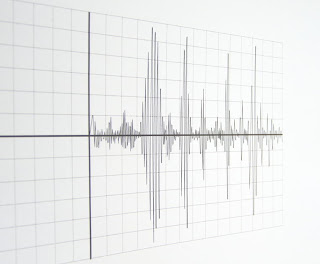
In 2006 the island of Java, Indonesia was struck by a devastating earthquake followed by the onset of a mud eruption to the east, flooding villages over several square kilometers and that continues to erupt today. Until now, researchers believed the earthquake was too far from the mud volcano to trigger the eruption. Geophysicists at the University of Bonn, Germany and ETH Zurich, Switzerland use computer-based simulations to show that such triggering is possible over long distances. The results have been published in Nature Geoscience.
On May 27, 2006 the ground of the Indonesian island Java was shaking with a magnitude 6.3 earthquake. The epicenter was located 25 km southwest of the city of Yogyakarta and initiated at a depth of 12 km. The earthquake took thousands of lives, injured ten thousand and destroyed buildings and homes. 47 hours later, about 250 km from the earthquake hypocenter, a mud volcano formed that came to be known as “Lusi,” short for “Lumpur Sidoarjo.” Hot mud erupted in the vicinity of an oil drilling-well, shooting mud up to 50 m into the sky and flooding the area. Scientists expect the mud volcano to be active for many more years.
Eruption of mud volcano has natural cause
Was the eruption of the mud triggered by natural events or was it human-made by the nearby exploration-well? Geophysicists at the University of Bonn, Germany and at ETH Zürich, Switzerland investigated this question with numerical wave-propagation experiments. “Many researchers believed that the earthquake epicenter was too far from Lusi to have activated the mud volcano,” says Prof. Dr. Stephen A. Miller from the department of Geodynamics at the University of Bonn. However, using their computer simulations that include the geological features of the Lusi subsurface, the team of Stephen Miller concluded that the earthquake was the trigger, despite the long distance.
The overpressured solid mud layer was trapped between layers with different acoustic properties, and this system was shaken from the earthquake and aftershocks like a bottle of champagne. The key, however, is the reflections provided by the dome-shaped geology underneath Lusi that focused the seismic waves of the earthquakes like the echo inside a cave. Prof. Stephen Miller explains: “Our simulations show that the dome-shaped structure with different properties focused seismic energy into the mud layer and could very well have liquified the mud that then injected into nearby faults.”
Previous studies would have underestimated the energy of the seismic waves, as ground motion was only considered at the surface. However, geophysicists at the University of Bonn suspect that those were much less intense than at depth. The dome-like structure “kept” the seismic waves at depth and damped those that reached the surface. “This was actually a lower estimate of the focussing effect because only one wave cycle was input. This effect increases with each wave cycle because of the reducing acoustic impedance of the pressurizing mud layer.” In response to claims that the reported highest velocity layer used in the modeling is a measurement artifact, Miller says „that does not change our conclusions because this effect will occur whenever a layer of low acoustic impedance is sandwiched between high impedance layers, irrespective of the exact values of the impedances. And the source of the Lusi mud was the inside of the sandwich. ”
It has already been proposed that a tectonic fault is connecting Lusi to a 15 km distant volcanic system. Prof. Miller explains “This connection probably supplies the mud volcano with heat and fluids that keep Lusi erupting actively up to today,” explains Miller.
With their publication, scientists from Bonn and Zürich point out, that earthquakes can trigger processes over long distances, and this focusing effect may apply to other hydrothermal and volcanic systems. Stephen Miller concludes: “Being a geological rarity, the mud volcano may contribute to a better understanding of triggering processes and relationships between seismic and volcanic activity.” Miller also adds „maybe this work will settle the long-standing controversy and focus instead on helping those affected.” The island of Java is part of the so called Pacific Ring of Fire, a volcanic belt which surrounds the entire Pacific Ocean. Here, oceanic crust is subducted underneath oceanic and continental tectonic plates, leading to melting of crustal material at depth. The resulting magma uprises and is feeding numerous volcanoes.










